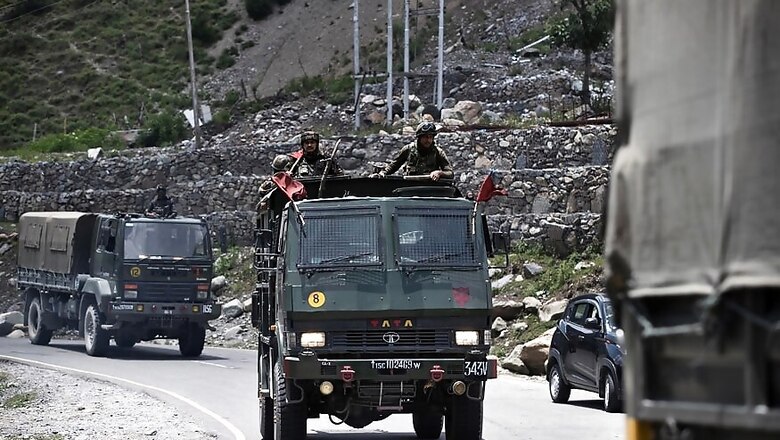
views
India on Sunday hit the reset button on the rules of engagement with Chinese troops along the entire Line of Actual Control, empowering field commanders to sanction use of firearms under “extraordinary” circumstances.
News18 had earlier in the day reported that armed forces deployed along the 3,500-km de-facto border with China have been given "full freedom" by the government in giving a "befitting" reply to any provocation.
The change in the policy to use firearms comes as defence minister Rajnath Singh held a review meeting with the Chief of Defence Staff and the three defence chiefs for over two hours on Sunday to assess the situation at the border. Government sources said he gave his go-ahead for the new tactical approach to be adopted.
Under the previous rules of engagement based on agreements signed in 1996 and 2005, troops from neither side could open fire on the other to prevent any escalation. The two countries had also agreed not to use blasting explosives or firearms within two kilometres of either side of the LAC.
"Taking into consideration the local situation, the government has given full freedom to the Indian Army on how to
deal with China while protecting the Indian territory and the lives of the army personnel," Union Minister of State for Home G Kishan Reddy told reporters after the meeting.
The change in the rules comes just days after a violent face-off between the troops of the two countries at patrolling point 14 in the Galwan Valley in eastern Ladakh, which led to the death of 20 Indian soldiers, including a commander.
The Indian troops were attacked with iron rods clubs wrapped in barbed wire during the clash, and questions were later asked as to why did the Indian soldiers did not fire in self-defence.
Indian foreign minister S Jaishankar in a Twitter post had responded: “Let us get the facts straight. All troops on border duty always carry arms, especially when leaving post. Those at Galwan on 15 June did so. Long-standing practice (as per 1996 & 2005 agreements) not to use firearms during faceoffs.”
Hu Xijin, editor of the Global Times, a Chinese government mouthpiece, said that if the reports of the nod for firearms was true, "this is a serious violation of the agreement, and India will pay a heavy price for any such action."
According to sources, Singh during Sunday’s meeting told the top military brass to maintain strict vigil on Chinese activities around land border, airspace and in strategic sea lanes, and asked them to adopt a "tough" approach in dealing with any misadventure by Chinese forces.
The new tactical approach to be taken up by the Army may also include staggered movement of patrols in key areas of the LAC besides holding some high position or feature for a strategic advantage.
Local commanders, sources said, will be told to do "whatever they need to when hostilities with PLA erupt', and forward movement of all assets, including ships, fighter jets and troops has begun.
Indian and Chinese armies have been on a six-week standoff in several areas of eastern Ladakh, with ties hitting a new low after the June 15 clash, in which another 76 Indian soldiers were also injured. China's People's Liberation Army (PLA) has not yet talked about the number of casualties it suffered.




















Comments
0 comment